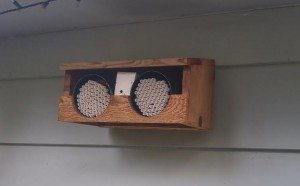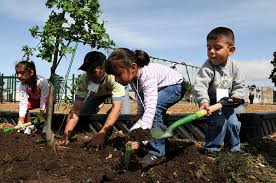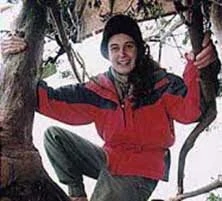Two hundred feet up in a tree. The winds were blowing so hard, she felt she would surely meet her demise, but Julia Butterfly Hill finally relaxed her tight grip on the tree she had named Luna so that she could move with its swaying. She had lived in that tree for over two years in an effort to prevent it from being logged, and events like these only strengthened her resolve to save what she loved.
Meet Julia on April 9-10 at our Love, Knowledge and Action course. She will be joining us by Skype to inspire our own personal way to support our Earth home.
Let Go of Fear and Embrace Love
Indeed, this level of environmental activism is heroic; some would say extreme. But through acts big and small, people around the world are recognizing that our relationship with the Earth is out of balance and want to take action.
But headlines of climate change and classroom lessons on endangered species can be overwhelming to adults and children alike – fueling anxiety or – perhaps worse – leading to numbness and denial as coping mechanisms. Perhaps we should try what Julia learned: to let our love of nature motivate us to action instead of fear.
What is the extinction of a condor to a child who has never known a wren? – Robert Michael Pyle, The Thunder Tree
Indeed, watching a child in nature is to watch our own innate nature – how children are fascinated by animals and bugs and flowers, and how they love to take care of their pets. By developing and encouraging children’s outdoor explorations, we begin a lifelong relationship with – and cultivate our innate love and stewardship of – our Earth home.
buy priligy Canada langleyrx.com/priligy.html no prescription
All My Relations
Ultimately, our work with Yoga Calm is about improving the quality of our relationships: with ourselves, others, and the world at large. As we’ve noted before, indigenous cultures that have a close relationship with the Earth recognize that reciprocity – giving back – is fundamental to any healthy relationship and key to all cures.
So here are a couple of simple ways you and the children in your life can connect with and give back to the earth.
Put up bird feeders and build a birdhouse. One of the fun “chores” we have for our granddaughter is filling all three of our bird feeders and suet feeder. Especially in the winter, when birds need the extra calories, filling the feeders and then watching to see who comes is a great way to get outside and learn about birds. And for Christmas, I got Anna a birdhouse construction kit, along with a toolbox and tools, so that we could build a home for our little friends.

More than 3,500 species of native bees help increase crop yields. Some scientists estimate that one out of every three bites of food we eat exists because of animal pollinators, such as bees, butterflies and moths, birds and bats, beetles, and other insects.
My yoga student Josh started us off with some mason bee houses many years back, and they’ve helped to keep our gardens productive. Creating a mason bee haven at your home is a simple, inexpensive activity. You can purchase a kit or create your own.
These bees are easy to care for and are of very little concern if you’re afraid of bees. These gentle bees rarely sting — only if their little bee lives are in danger. Their sting feels like a mosquito bite, and there have been no reported cases of anaphylactic shock resulting from a mason bee sting.

- Dandelions (yes, dandelions!)
- Catnip
- Goldenrod
- Lavender
- Penstemon
- Phacelia
- Rose
- Salvia
- Almond
- Apple
- Cherry
- Thyme
And remember: birds and bees do NOT like pesticides.
Learn more about how to cultivate children’s love of nature right outside your backdoor or in the schoolyard, and meet Julia Butterfly Hill at our Love, Knowledge and Action course on April 9-10. Certified Yoga Calm Instructors receive a discount, too.
buy premarin Canada langleyrx.com/premarin.html no prescription
More info here.


